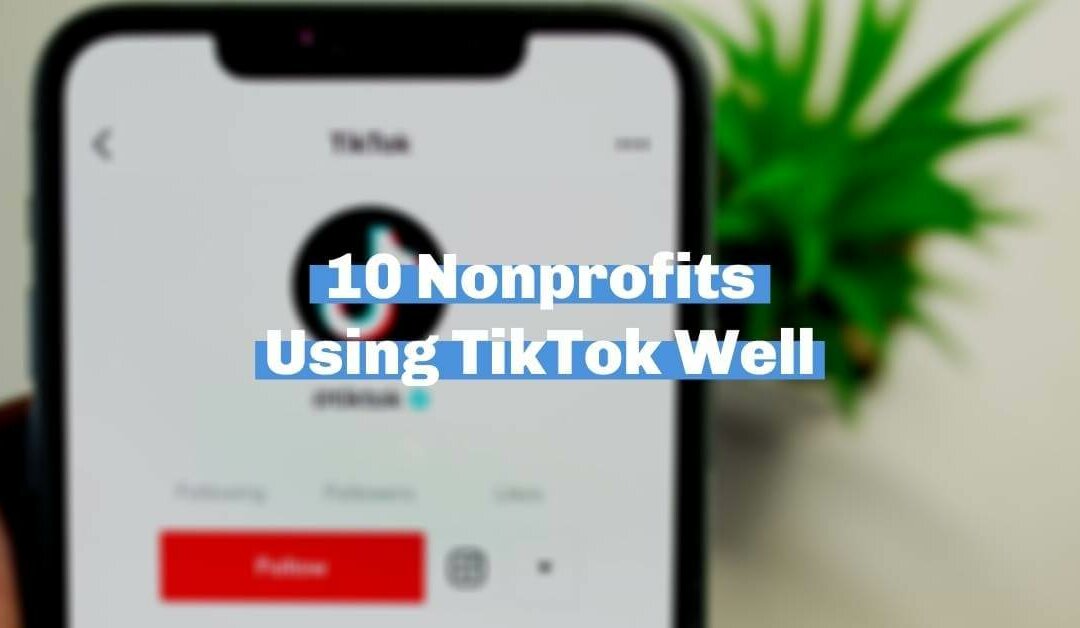Is Threads Worth Trying? A Guide for Nonprofits
If you’ve been following along with social media updates over the summer, you’ve likely heard the news: Threads has stepped into the ring. (Figuratively of course, but also literally, since Twitter’s owner, Elon Musk, challenged Meta’s CEO, Mark Zuckerburg, to a “cage match.” But we digress.)
Threads, the new microblogging app, dreamed up by Meta as an alternative to the all-powerful Twitter (now called X), is here to shake things up in the social media world—in a good way.
With a stated goal by the developers of creating a more “open and friendly” text-based social media app, people responded with astounding enthusiasm.
Within seven hours of its introduction to the market, Threads passed 10 million users. Within five days, they hit the 100 million user milestone, a number that took TikTok nine months and Instagram two and a half years to reach. Threads smashed records, becoming the fastest-downloaded app in history.
Although engagement dropped after the initial rollout, Threads still has what it takes “to kneecap X,” especially with the introduction of their recent web version. (Forbes says that the most engaged social media participants interact from their laptops.) And with the recent swirl of political drama, it looks like discussion and engagement on Threads might be on the rise again.
But let’s cut to the chase. Is Threads worth trying? Is it really that different from Twitter? Should nonprofits consider diverting valuable time and energy to expand onto yet another social media app?
We say you might want to give it a shot.
At the very least, this one has great potential. And here’s why.
- It’s linked to Instagram
Threads is unique in that it’s built off an already existing app– Instagram. That makes switching your follower base to Threads incredibly seamless. Setting up an account only takes minutes, and with the click of a button, you can connect to all of your Instagram followers, with no need to build a platform back from zero. Threads’ ability to interface with Instagram and share content on both platforms is also a huge plus.
Key takeaway for nonprofits: You don’t need to build your platform from scratch.
- It promotes storytelling.
Here at Swell + Good, we built our business around our belief in the power of storytelling. Good stories are crucial to getting people on board with your mission, and with a much higher character limit and the ability to use clearly organized threads to display longer narratives, Threads prioritizes effective storytelling over short, punchy tweets. Nuance and context can be more readily captured, and with better picture and video-sharing options, the storytelling experience is more immersive and appealing than what’s available on Twitter.
Key takeaway for nonprofits: Stories are essential for your marketing– and Threads is a better place to tell them.
- It fosters a genuine connection with your audience
The hope for Threads is that with a better format for replies and discussions, accounts and their followers will be able to connect more directly and with more depth; and for nonprofits, and really any brand, this is huge. Some companies have already done a great job with this, and their casual, quippy Threads presence is drawing in real engagement from consumers and enhancing personal connection to the brand. (For a few examples of for-profit brands embracing this new tone, check out Anthropologie, Wendy’s, and Chipotle.)
Key takeaway for nonprofits: Threads helps you connect personally with your supporters.
Ok, great. You’re convinced. You’ll give it a try. But what exactly would your content look like? Where can you find inspiration for this new venture? Luckily, there are nonprofits who have gone ahead of you, paving the way for a new type of communication and connection with supporters. Here are seven of them:
Unicef has been posing questions to their followers such as “How many months paid maternity leave do you get in your country?” and “What healthy food does your little one like to eat?”, inviting hundreds of replies from people across the world– and creating a community in the comments.
No Kid Hungry has embraced a more relatable tone and has seized the opportunity to bring people together—including their fellow nonprofits. “If we thread together with @feedingamerica and @mealsonwheels, can we make a quilting club to end hunger” they posted shortly after creating their account.
charity: water has done a great job of using the connected threads feature, as well as the more visually appealing slide-through photo gallery that Twitter doesn’t have, for more in-depth and compelling storytelling.
TED Talks is an excellent example of a nonprofit creating meaningful discussion. They have been posting a question for followers to answer with each video, such as “If you could go back in the timeline of your life, where and when would you choose to go?” and they actually respond to the answers in the comments.
StoryCorps is leading the way on supporter engagement, and even reposted and commented on a reply they received to one of their stories. Then the user replied to that post– creating a genuine interchange between the organization and a valued consumer.
Teach for America has opted for an off-hand and witty tone, posting short, relatable tidbits like “missing the adrenaline rush of seeing a teacher somewhere that isn’t school.”
Save the Children is acing the Threads game with great storytelling and informational posts combined with a dynamic tone and trending memes, creating a much more pleasurable experience than most of what you see on Twitter.
So here’s hoping that Threads really does usher in a new era of kindness on the internet, boosts community and engagement, and becomes another, better place for you to share your organization’s story– and connect with those who make it all possible.









